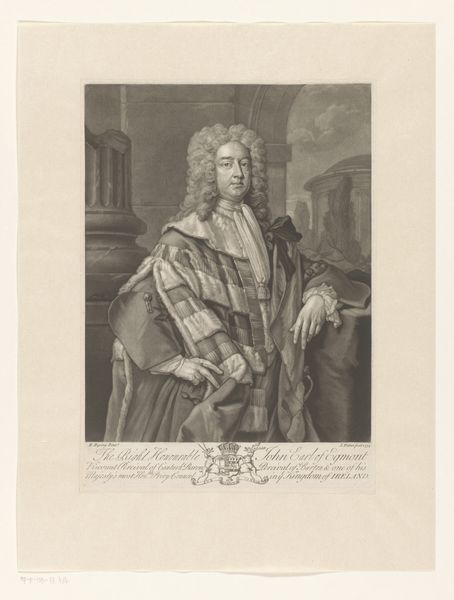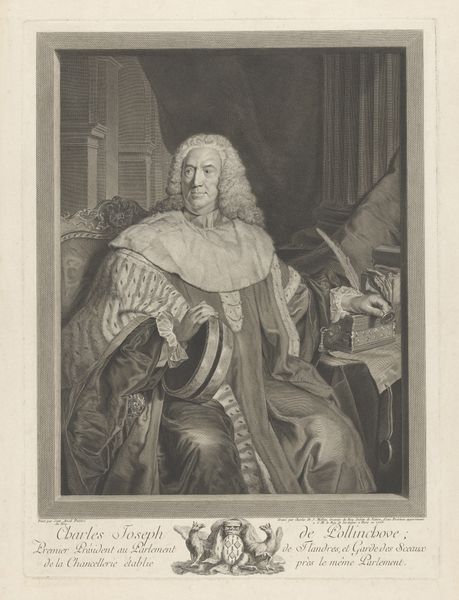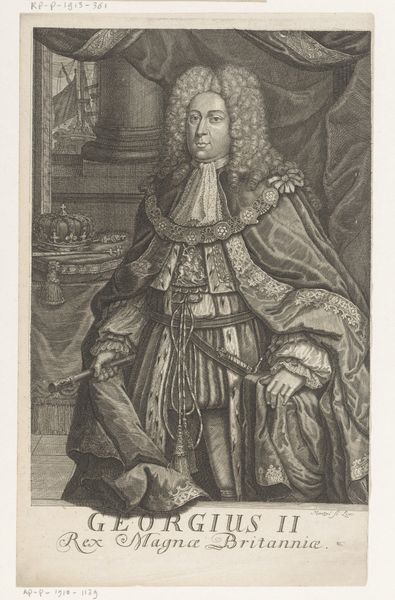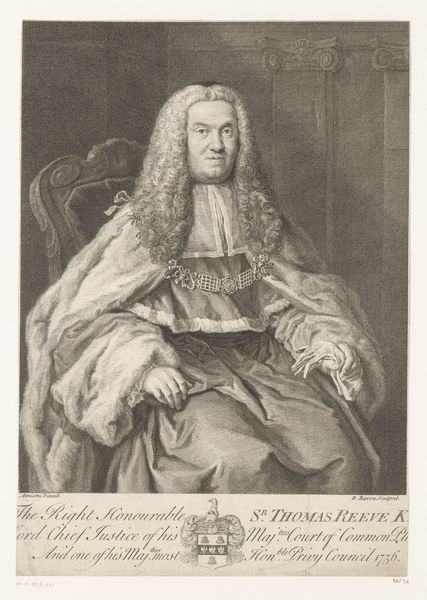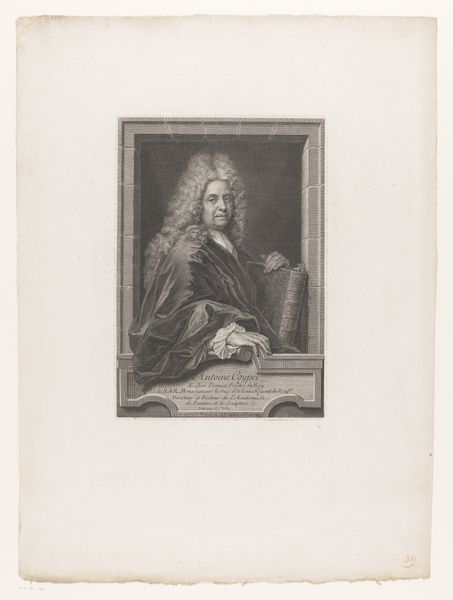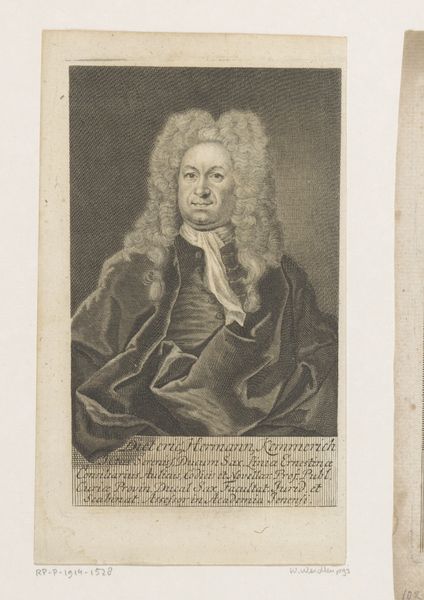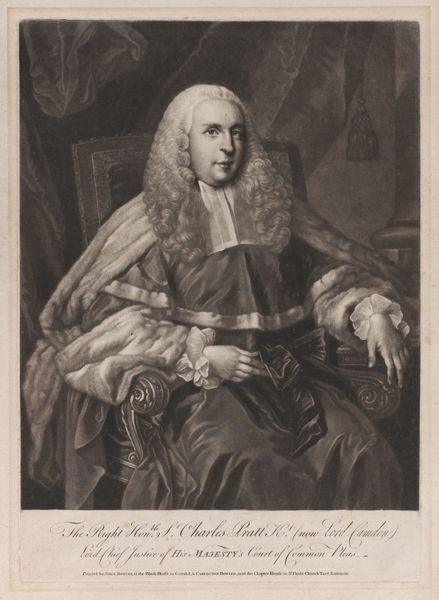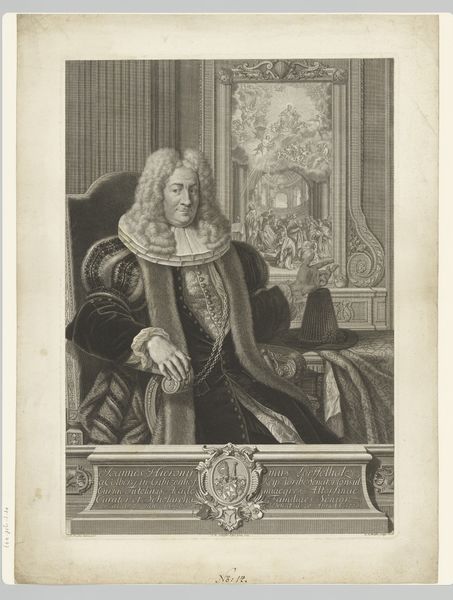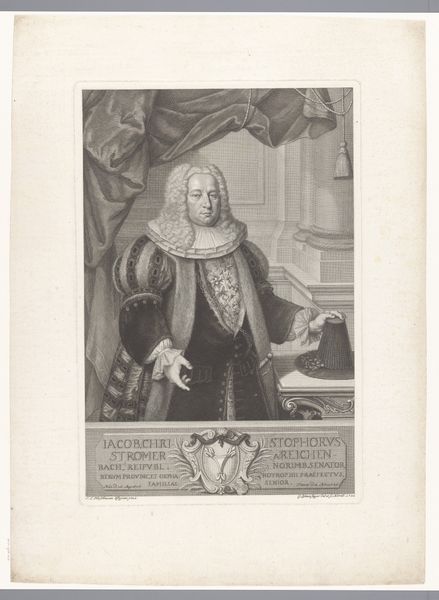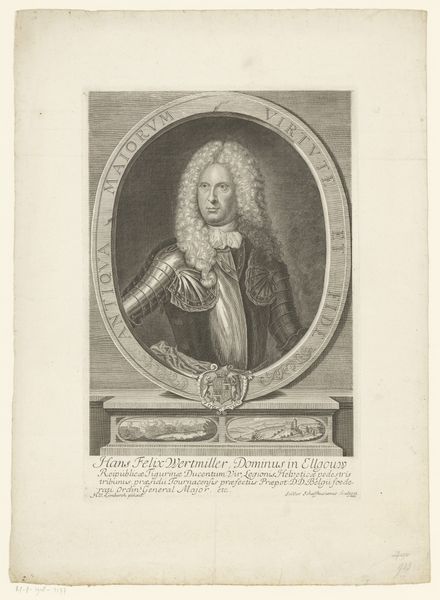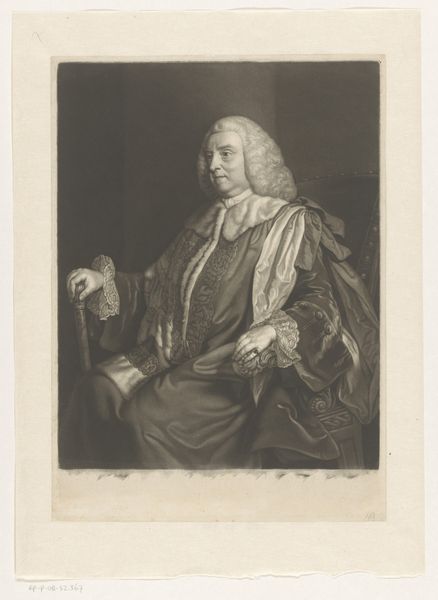
print, engraving
#
portrait
#
baroque
# print
#
history-painting
#
academic-art
#
engraving
Dimensions: height 352 mm, width 254 mm
Copyright: Rijks Museum: Open Domain
Editor: So, here we have "Portrait of William Thomson," an engraving from 1739 by John Faber the Younger. The man practically swims in that luxurious wig! It feels very formal, but I'm curious, what catches your eye when you look at this portrait? Curator: Well, firstly, darling, I'm utterly transported by the texture. Look how Faber renders the velvety sheen of the robe versus the almost unruly exuberance of the wig! It's pure Baroque indulgence, wouldn't you agree? It also speaks volumes about power and societal expectations, don’t you think? This is more than just a picture; it is a pronouncement. What does that mean to you? Editor: That's interesting! It definitely comes off as a calculated display. I suppose the wig, the robe, even the slightly aloof expression, they're all constructing an image of authority. I was so focused on the visual aspect that I totally overlooked this image-making side. Curator: Precisely! It's like performance art frozen in ink, really! And don’t forget, engravings were a means of disseminating images. This portrait would have solidified Thomson’s image far beyond his immediate circle, shaping his legacy through carefully constructed symbolism. It reminds us that portraiture can serve purposes way beyond mere record-keeping. Do you find yourself connecting to it any differently now? Editor: Definitely. Now I feel like I understand how carefully constructed images can mold the way we see things in general, even in contemporary society. Thanks so much for sharing. Curator: The pleasure was all mine! Never underestimate the power of a powdered wig and a skilled engraver, my dear. They whisper volumes about a bygone era and sometimes our present, too.
Comments
No comments
Be the first to comment and join the conversation on the ultimate creative platform.
